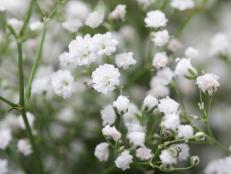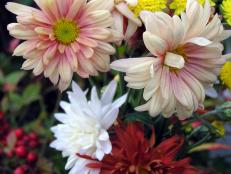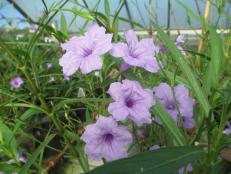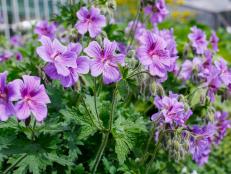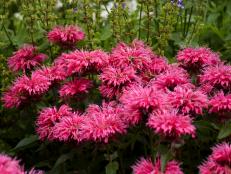Bearded Iris
Plant type: Herbaceous perennial
Hardiness: USDA Zones 3 to 10
Bearded iris is the most commonly grown iris. Its flower has six petals; the three upright petals are called standards, and three hanging petals are called falls. A characteristic fuzzy line, or the beard, comes out of each fall; this is where the bearded iris gets its name. Flowers come in a variety of colors, including pink, white, rose, purple, blue, yellow, orange and bicolors. Blooms in spring with some cultivars repeat-blooming throughout summer and fall. Semi-evergreen leaves are narrow, green and swordlike, growing together in a fan shape. Bearded iris is classified into three main groups based on height: dwarf (height is no more than 15 inches tall), intermediate (between 15 and 28 inches), and tall (greater than 28 inches).
How to use it: Plant in mass for full effect. Use in the front to middle of a sunny, mixed perennial border. Plant in a cottage garden. Cutflower.
Culture: Prefers a moist, well-drained or sandy soil. Requires good drainage. If planting in clayey soils, amend soil to provide good drainage or raise planting beds. Plant in full sun to partial afternoon shade (only in hot climates). Benefits by fertilization. Iris have rhizomes which are thick, fleshy stems that grow underground. To plant rhizomes, dig a shallow hole just below the soil surface. Place rhizomes with the growing tip pointed up and roots pointed down. Make sure the growing tip is oriented in the direction where you want it to go since the fan will grow from that point. If planting several rhizomes, space approximately one foot apart. Primarily propagated through division. Requires division every three to five years and can be done from July to October. (The appropriate time to divide depends on the climate and giving plants enough time to establish before winter arrives.) To divide bearded iris, cut back fans by at least half and lift the clump out of the ground. Hose off excess soil at the roots. With a clean, sharp knife, cut rhizomes apart into sections so that each section has one fan and some healthy roots. May have problems with iris borer and rot (in poorly draining soils). To control iris borer, cleanliness is key. When foliage has died back, remove and destroy debris; this is where the borer overwinters.
Special notes: The name iris is derived from Greek mythology where Iris was the goddess of the rainbow, therefore aptly named for its variety of flower colors. The Dykes Medal is the prestigious award given to a notable, outstanding performing bearded iris selected each year.
Selected cultivars
- 'Beverly Sills'. Perhaps the most in-demand bearded iris. Bright coral pink flowers. 1985 Dykes Medal winner.
- 'Splashacata'. Features iridescent blue standards and purple falls speckled and frosted in white. 2005 Dykes Medal winner.






